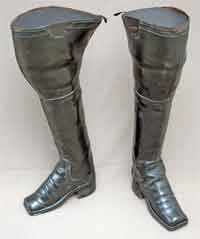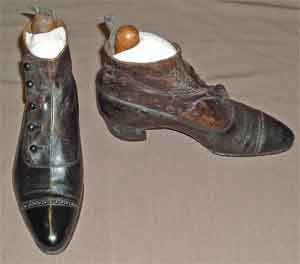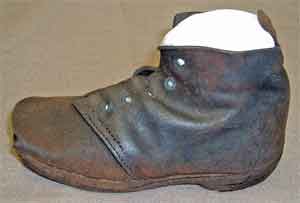


Boots and shoes come in all shapes and sizes. The leather is often split and distorted, sections may be lost,and they usually need support. Usually they come from historic sites or museums, but they are also found in the ground. For leather to survive underground the soil needs to be saturated, and sealed off from oxygen.
| Home |  |
Thigh boots from Hardwick Hall, Cavendish Collection, The National Trust. One of the boots was in two pieces when received. The splits have been repaired, and the very heavy 19th century wooden supports have been replaced with silk covered light weight ones. |
 |
Vesta Tilley's boots after conservation. The boots were heavily distorted and had extensive splitting. Fine new leather was inserted behind the damage and a support was made to go inside. Property of Worcestershire County Museum. Vesta Tilley was a very popular music hall male impersonator. | |
 |
A Blucher boot from a Scottish island. It had been preserved by the waterlogged conditions in the peat bog which prevented oxygen reaching it. The boot has been dried, dressed, and reshaped for display. Conserved for a private client. |
©2006 Sturge Conservation Studio